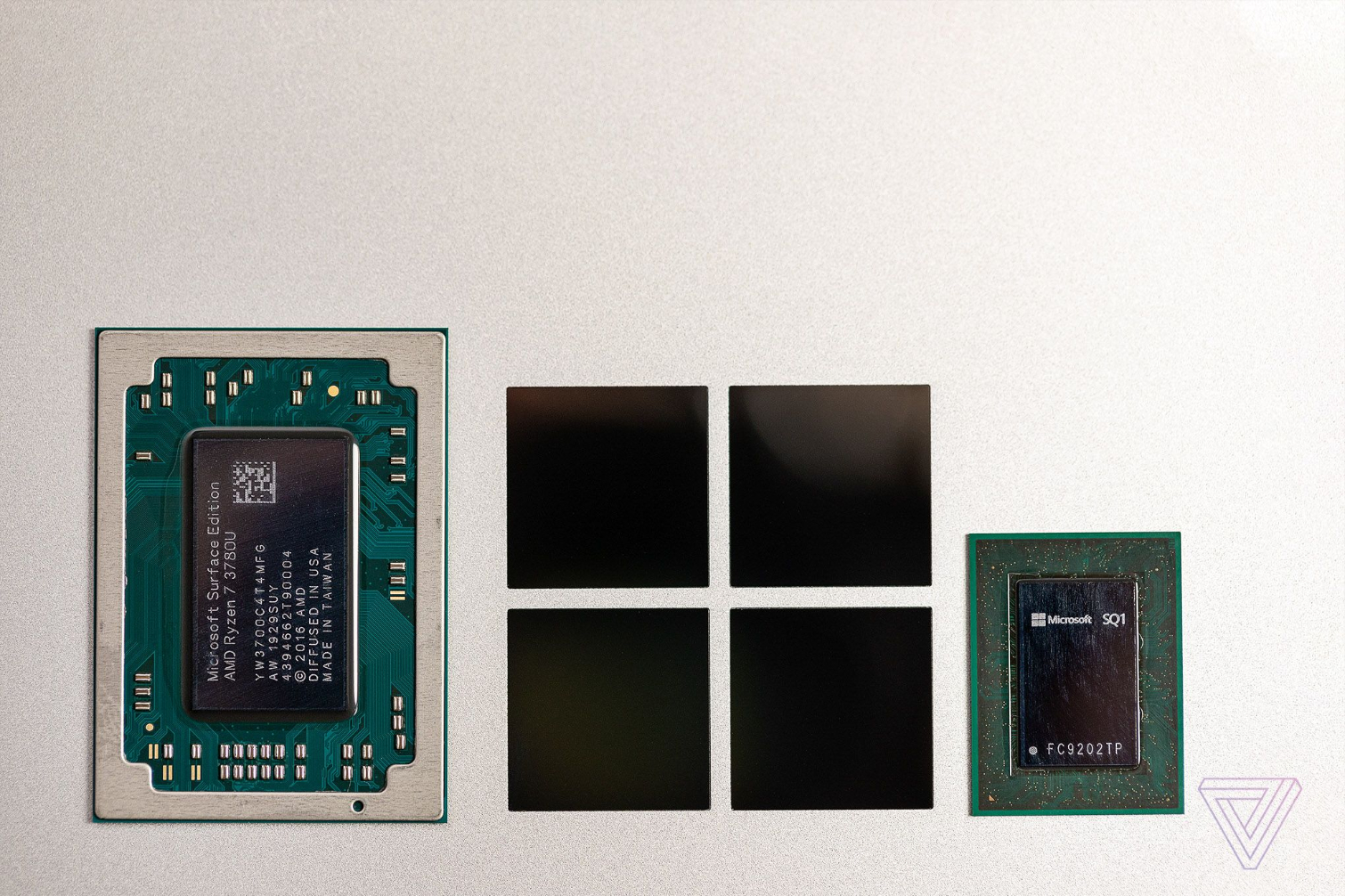All we Know About Microsoft's Custom SQ1 Processor Inside the Surface Pro X
Microsoft’s newly announced 5.3mm thin Surface Pro X 2-in-1 wields the custom 7W Microsoft SQ1 processor. Microsoft designed the Arm CPU together with Qualcomm and claimed it delivers three times higher performance per watt than the Surface Pro 6. It has a 2 teraflops GPU and is also the first Windows PC with an integrated AI engine, Microsoft says, delivering 9TOPS.
Microsoft announced the SQ1 processor at its October Event on Wednesday. Microsoft didn't provide many details about the actual CPU, but The Verge has posted some additional coverage. Microsoft said it was designed in partnership with Qualcomm: “It brings together the Snapdragon Mobile DNA alongside an integrated AI accelerator.” According to The Verge, it is derived from Qualcomm’s 7nm Snapdragon 8cx platform. But Microsoft says it has made material changes to the IP: “Changing the chip itself, reengineering all the tools, the architecture to an incredibly powerful experience that you will not find anywhere else. And together with Qualcomm, we also redesigned the GPU and other pieces of silicon I’m not allowed to [say].”
The Snapdragon 8cx Compute Platform features eight Kryo 495 cores. In the Samsung Galaxy Book S, those run at 2.84GHz, but in the Surface Pro X they run at 3GHz.
On the GPU side, Qualcomm promises 2.1 teraflops of performance, compared to 1.8 teraflops of the Snapdragon 8cx. However, this is likely referring to FP16 performance, so FP32 performance that is used in games would be 1.05 teraflops. Not too long ago, Intel boasted that Ice Lake’s Gen11 was its first (mainstream) integrated GPU with a speed of 1 teraflop, so Microsoft is delivering serious performance here. Microsoft claims it delivers 3x more performance per watt than the Surface Pro 6, which has a 15W quadcore 14nm Intel Coffee Lake-U 8th gen CPU. Microsoft says this enables more battery life but didn’t specify how much.
As a novelty for a Windows product, it also has a powerful 9TOPS AI engine. For AI tasks, Microsoft says it uses 50x less power than a (15W) GPU. To fit the performance needs of a PC it has a 7W TDP, compared to roughly 2W phone chipsets typically have, with bursts to 15W.
The Surface Pro X 2-in-1 has an edge-to-edge 13” display with 2880x1920 resolution (267ppi) and 1400:1 contrast ratio. Other features include fast charging, an LTE-A modem, a rechargeable stylus that can be stored inside the laptop, a removable SSD, up to 16GB RAM, two USB-C ports, a 4K webcam and two microphones with noise suppression. The device measures 5.3mm and weighs 762g. Its price starts at $999.
With devices such as the Intel-powered Surface Pro 7, the Microsoft-Qualcomm powered Surface Pro X, the partly AMD-powered Surface Laptop 3, and even the Surface Earbuds and in the future the Intel-powered Surface Neo, Microsoft is showing a clear willingness to diversify both its hardware and the hardware component suppliers it uses. It also shows that Microsoft is continuing to support the Arm Windows ecosystem, despite previous failed attempts. And finally, although not a first, Microsoft’s willingness to design its own silicon bodes questions for how far the company will push this custom approach to silicon design in future products.
Get Tom's Hardware's best news and in-depth reviews, straight to your inbox.
